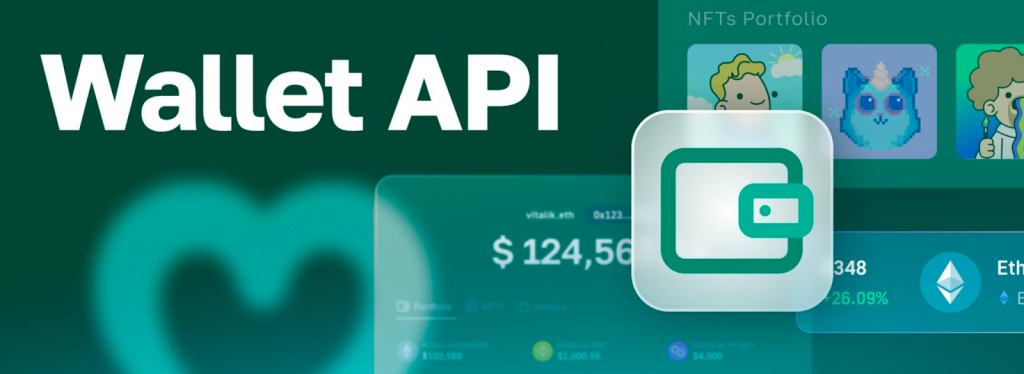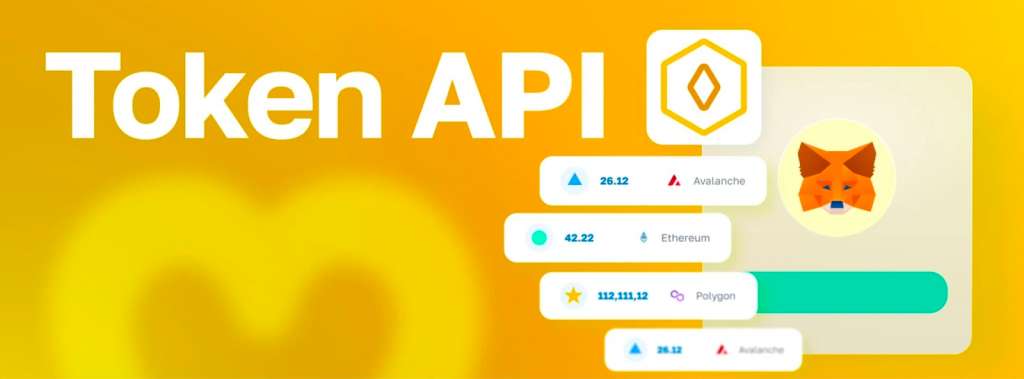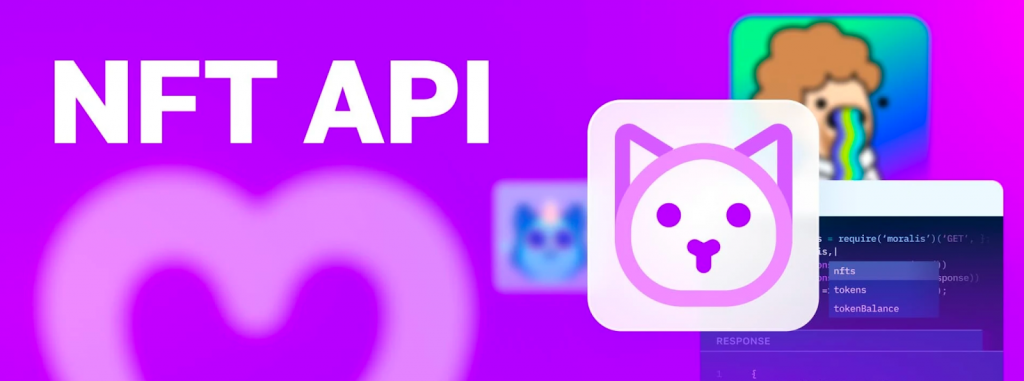Security is a major concern when it comes to cryptocurrency wallets, with the loss or misplacement of a private key potentially leading to huge losses. This presents a significant hurdle for the widespread acceptance and continued adoption of Web3 technologies. To address these challenges, Web3 developers are turning to innovative solutions like multi-party computation (MPC) and multi-signature wallets. But what is an MPC wallet? And what is a multisig wallet? If you’re looking for the answers to these questions, join us in the article as we explore the intricacies of both these wallet types!
Overview
In today’s article, we’ll dive into the ins and outs of MPC and multisig wallets. In doing so, we’ll explain what they are, how they work, and highlight the advantages they offer in the digital asset space. Once you have an overview of MPC and multisig wallets, we’ll compare them to underscore their similarities and differences. Lastly, for those interested in crypto wallet development, we’ll additionally introduce Moralis – the industry’s #1 Web3 API provider!
With Moralis’ premier Web3 APIs, you can seamlessly fetch on-chain data and integrate blockchain functionality into your decentralized applications (apps) with only single lines of code. Consequently, when working with Moralis, you can effortlessly build crypto wallets, decentralized exchanges (DEXs), portfolio trackers, or any other Web3 platform without breaking a sweat.

So, if you want to take your Web3 development efforts to the next level, sign up with Moralis right now. You can create an account for free and get instant access to all our industry-leading Web3 APIs!
Nonetheless, let’s get right into it by answering the question, ”What is an MPC wallet?”
What is an MPC Wallet?
Multi-party computation (MPC) wallets are smart contract wallets leveraging advanced cryptographic protocols to enable multiple parties to collectively control and manage digital assets on a blockchain network. This is accomplished by splitting a wallet’s private key into numerous shares, which are distributed to various stakeholders that together generate transaction signatures!

So, how do MPC wallets work?
To understand how MPC wallets work, we initially need to briefly break down the basics of multi-party computations. In short, MPC technology allows multiple parties to jointly evaluate and compute a function using private data without ever having to reveal their individual inputs. To clarify this, let’s look at a simple example.
Imagine the following scenario: Rob, Bob, and Sam want to find out who has the highest salary, but they don’t want to disclose to one another what they individually make. This is possible with an MPC protocol, where they can calculate the highest salary using their inputs without revealing any private information.
In the context of MPC wallets, the private key is split into several shares that are divided amongst various stakeholders. These stakeholders then collectively contribute to generating transaction signatures using MPC technology, meaning they never have to reveal their part of the key to the other participants. Consequently, there isn’t a time when the private key is fully reconstructed in one place.
In summary, an MPC wallet splits the private key into numerous shares and divides them among multiple stakeholders. Together, the participants can generate a transaction signature without ever reconstructing the complete private key in one place. This significantly boosts security and improves flexibility!
Benefits of Using an MPC Wallet
Using an MPC wallet provides loads of benefits, and in this section, we’ll look at three prominent examples:
- Enhanced Security: As MPC wallets divide private keys into multiple shares – which are distributed among various participants – it significantly improves security as this approach removes the single point of failure conventional Web3 wallets have.

- Improved Flexibility: MPC wallets enable more flexibility when it comes to access control and permission settings. This allows users to define roles and responsibilities for each participant, a particularly useful feature for organizations that need strict control over their digital assets.
- Cost-Efficiency: MPC wallets typically require fewer on-chain transactions compared to – for instance, multisig wallets, making them cheaper to set up, maintain, and manage.
What is a Multisig Wallet?
Multisig wallets – short for ”multi-signature wallets” – are cryptocurrency wallets requiring several signatures – from different people or devices – to manage funds and execute transactions. This approach significantly enhances security and is often used for managing shared funds!

So, how do multisig wallets work?
In short, a multisig wallet leverages smart contracts to distribute multiple private keys and define rules for usage, such as the minimum number of signatures required to execute transactions. Any participant in a multisig wallet can typically initiate transactions. However, it will remain pending until the necessary number of private keys has been used to sign the transaction.
Requiring multiple signatures mitigates the risks of malicious actors taking control of the funds, as they can’t do much even if they get their hands on a private key. What’s more, since control can be distributed among multiple participants, it opens up the opportunity for users to manage shared funds more efficiently.
All in all, a multisig wallet distributes two or more private keys and requires multiple signatures to manage funds and execute transactions. This significantly improves security and opens up the opportunity for users to manage funds collectively in a safe manner!
Benefits of Using a Multisig Wallet
Like MCP wallets, multisig wallets also provide many benefits, and down below, you’ll find three examples:
- Improved Security: Since multisig wallets require more than one private key to execute transactions, it minimizes the risks of losing funds if one of the keys gets into the wrong hands. In essence, multisig wallets remove the single point of failure most conventional wallets have.

- Cooperation Between Parties: Multisig wallets facilitate shared control over funds and assets, which is perfect for organizations, partnerships, and other groups where the decisions about asset movement should be a collective process.
- Reduced Risk of Fraud: Multisig wallets need more than one signature to execute transactions, minimizing the risk of one participant acting maliciously by trying to steal funds from the wallet.
MPC Wallet vs Multisig Wallet
Now, with an overview of both MPC and multisig wallets, let’s compare them to highlight their similarities and differences!
Both MPC and multisig wallets serve to enhance the security, flexibility, and control over digital assets by involving multiple parties in transaction approvals. Yet, they are not the same, as they operate using different underlying mechanisms.

MPC wallets leverage a cryptographic technique where one private key is divided into multiple shares that are distributed among participants. From there, the parties jointly perform computations required to, for instance, sign transactions. In doing so, the private key is never reconstructed in its entirety.
Multisig wallets, on the other hand, require several signatures from multiple parties to authorize transactions. As such, rather than dividing the private key into shares, these wallets distribute multiple separate keys to involved participants.
So, while MPC and multisig wallets serve the same purpose and both involve multiple parties in the transaction process, they differ significantly in how they handle private keys. In essence, MPC wallets rely on splitting the private key, while multisig wallets distribute individual keys to each participant.
How to Build an MPC Wallet and a Multisig Wallet
At this point, you might be thinking about building either an MPC or multisig wallet yourself. If this is the case, then you’ll definitely want to leverage Moralis in your development endeavors!
But what is Moralis?
Moralis is the industry’s leading Web3 API provider, giving you the tools you need to build cryptocurrency wallets and other Web3 platforms. In our diverse toolset, you’ll find interfaces like the Wallet API, NFT API, Token API, and many others. With these APIs, you can effortlessly fetch on-chain data and integrate Web3 functionality into your projects without breaking a sweat!

But why should you leverage Moralis when building an MPC or multisig wallet?
To answer this, let’s look at some benefits of working with Moralis!
- Top Performance: Moralis sets the gold standard in the Web3 API sector. It doesn’t matter whether you measure by speed, reliability, or any other metric; Moralis’ APIs continuously blow the competition out of the water.
- Data Accessibility: With Moralis’ Web3 APIs, you can effortlessly query the on-chain data you need with only single lines of code. As such, when working with Moralis, it has never been easier to build Web3 projects.
- Cross-Chain Compatability: All of our Web3 APIs are cross-chain compatible, supporting blockchains like Ethereum, Solana, BNB Smart Chain (BSC), Polygon, Arbitrum, Avalanche, and many others.
- Trusted By Industry Leaders: Moralis is trusted by industry leaders like MetaMask, Opera, NFTScan, Delta, Polygon, etc.
Nevertheless, to further highlight the power and accessibility of Moralis, let’s explore three prominent APIs you’ll likely find helpful when building Web3 wallets!
Wallet API
Moralis’ Wallet API is the ultimate solution for wallet builders. With this premier API, you can seamlessly fetch native balances, NFTs, transactions, etc., of any address with only single lines of code!

Moreover, the Wallet API provides additional features like address labels, decoded transactions, profile data, full account abstraction support, and more. Consequently, when working with this tool, you get much of what you need to build advanced Web3 wallets.
To highlight the accessibility of the Wallet API, here’s an example of how you can query the native balance of any address with the getNativeBalance() endpoint:
const response = await Moralis.EvmApi.balance.getNativeBalance({ "chain": "0x1", "address": "0xDC24316b9AE028F1497c275EB9192a3Ea0f67022" }); Token API
The Token API is the industry’s leading tool for ERC-20 token data. With only single API calls, you can use this interface to fetch and integrate token prices, transfers, balances, and more!

Moralis’ Token API supports every single token across 10+ EVM chains. This includes everything from stablecoins to meme coins and everything in between. As such, with this tool, you can effortlessly build crypto wallets, decentralized exchanges (DEXs), portfolio trackers, etc.
Here’s an example of how easy it is to get the price of any token using the getTokenPrice() endpoint:
const response = await Moralis.EvmApi.token.getTokenPrice({ "chain": "0x1", "address": "0x7d1afa7b718fb893db30a3abc0cfc608aacfebb0" }); NFT API
Moralis’ NFT API is the ultimate solution for NFT data. With the NFT API, you can effortlessly fetch NFT metadata, transfers, on-chain prices, optimized image previews, and much more with only single lines of code!

What’s more, this API supports over three million NFT collections across all the major blockchain networks. This includes everything from tokens that dropped just seconds ago to well-established projects like CryptoPunks and Pudgy Penguins.
To highlight the power of this tool, here’s an example of how to fetch NFT metadata using the getNFTMetadata() endpoint:
const response = await Moralis.EvmApi.nft.getNFTMetadata({ "chain": "0x1", "address": "0xb47e3cd837dDF8e4c57F05d70Ab865de6e193BBB", "tokenId": "1" }); If you’d like to explore all our development tools, check out the official Web3 API page!
Also, did you know you can sign up with Moralis for free? So, create your Moralis account now, and you’ll get instant access to all our industry-leading Web3 APIs!
Summary: What are an MPC Wallet and a Multisig Wallet
In today’s article, we kicked things off by diving into the intricacies of MPC wallets. In doing so, we learned that an MPC wallet is a smart contract wallet splitting its private key into shares that are distributed to multiple stakeholders. The stakeholders can then collectively generate transaction signatures without ever having to reconstruct the full key in one place.
From there, we additionally explored multisig wallets, where we learned that they are cryptocurrency wallets requiring multiple signatures from different people or devices to execute transactions and manage funds. This is possible by distributing numerous private keys and defining clear usage rules through smart contracts.
Next, we compared MPC and multisig wallets to one another, where we learned that they both serve the same purpose. However, they operate using different underlying mechanisms. MPC wallets split the private key into fragments, while multisig wallets use multiple private keys to sign transactions.
If you liked this MPC and multisig wallet guide, consider reading more content here on the Moralis Web3 blog. For instance, learn how to index blockchain data with ease!

Also, if you want to get into Web3 wallet development, don’t forget to sign up with Moralis. You can create your free account now, and you’ll get instant access to all our premier Web3 APIs!
Read More: moralis.io









 Bitcoin
Bitcoin  Ethereum
Ethereum  Tether
Tether  XRP
XRP  Solana
Solana  USDC
USDC  Dogecoin
Dogecoin  TRON
TRON  Cardano
Cardano  Lido Staked Ether
Lido Staked Ether  Wrapped Bitcoin
Wrapped Bitcoin  Hyperliquid
Hyperliquid  Wrapped stETH
Wrapped stETH  Sui
Sui  Chainlink
Chainlink  Avalanche
Avalanche  Stellar
Stellar  LEO Token
LEO Token  Bitcoin Cash
Bitcoin Cash  Toncoin
Toncoin  Shiba Inu
Shiba Inu  USDS
USDS  Hedera
Hedera  WETH
WETH  Wrapped eETH
Wrapped eETH  Litecoin
Litecoin  Polkadot
Polkadot  Binance Bridged USDT (BNB Smart Chain)
Binance Bridged USDT (BNB Smart Chain)  Monero
Monero  Ethena USDe
Ethena USDe  Bitget Token
Bitget Token  Pepe
Pepe  Pi Network
Pi Network  Coinbase Wrapped BTC
Coinbase Wrapped BTC  WhiteBIT Coin
WhiteBIT Coin  Aave
Aave  Uniswap
Uniswap  Dai
Dai  Ethena Staked USDe
Ethena Staked USDe  Bittensor
Bittensor  Aptos
Aptos  Cronos
Cronos  OKB
OKB  NEAR Protocol
NEAR Protocol  BlackRock USD Institutional Digital Liquidity Fund
BlackRock USD Institutional Digital Liquidity Fund  Internet Computer
Internet Computer  Jito Staked SOL
Jito Staked SOL  Ethereum Classic
Ethereum Classic  sUSDS
sUSDS